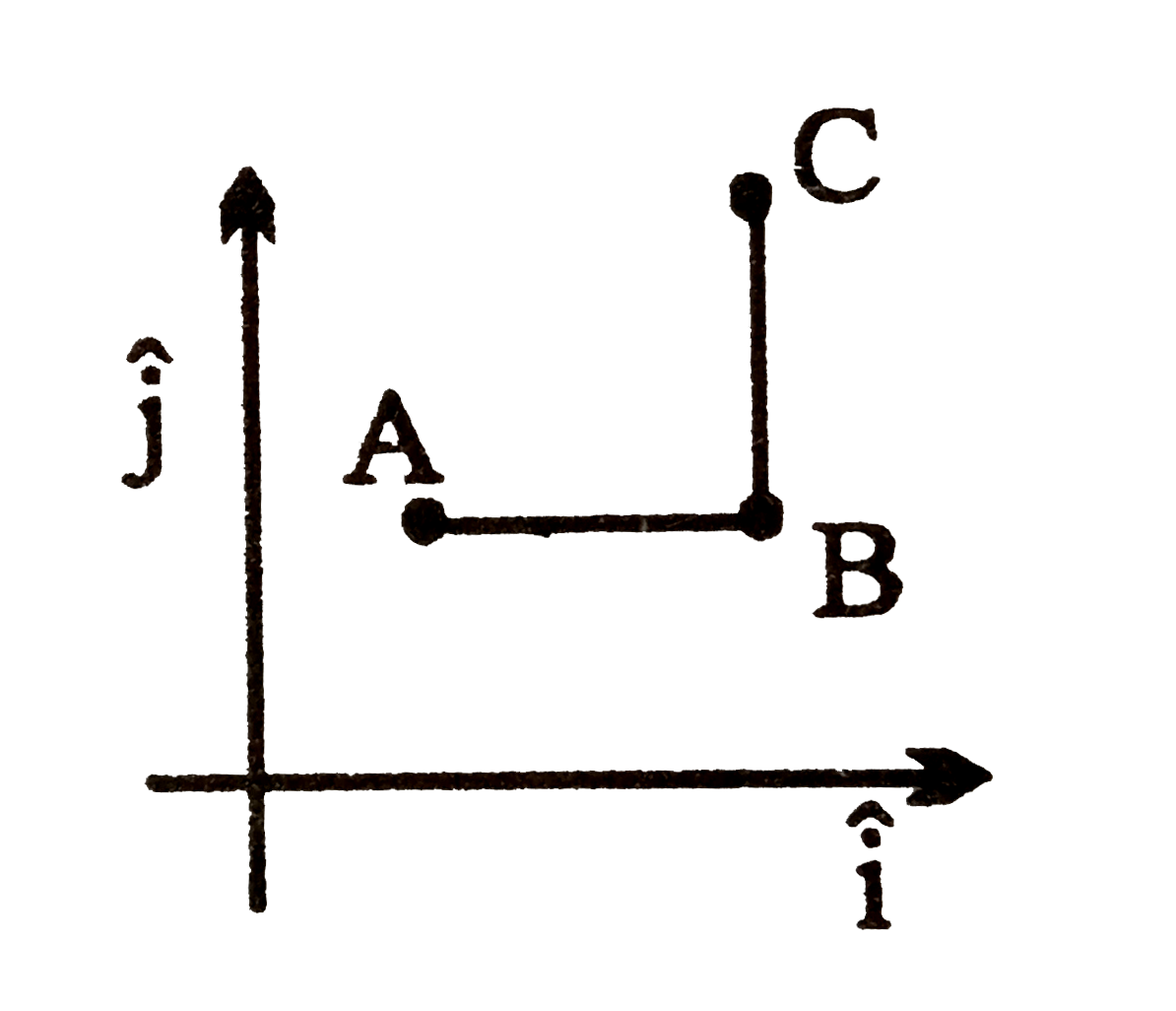There is a uniform magnetic field B normal to the xy plane. A conductor ABC has length AB=l1, parallel to the x axis, and lengthh BC=l2 parallel to the y-axis. ABC moved in the xy plane with velocity vxˆi+vyˆj. The potential difference between A and C is proportional to
vxl1+vyl2
vxl2+vyl1
vxl2−vyl1
vxl1−vyl2
The correct Answer is:A
Topper's Solved these Questions
Similar Questions
Knowledge Check
There is a uniform magnetic field B normal to the xy plane. A conductor ABC has length AB=l1, parallel to the x-axis, and length BC=l2, parallel to the y-axis. ABC moves in the xy plane with velocity vxˆi+vyˆj. The potential difference between A and C is proportional to
 Avxl1+vyl2Bvxl2+vyl1Cvxl2−vyl1Dvxl1−vyl2
Avxl1+vyl2Bvxl2+vyl1Cvxl2−vyl1Dvxl1−vyl2The conductor ABCD has the shape shown. It lies in the yz plane, with A and e on the y-axis. When it moves with a velocity v in a magnetic field B, and emf e is induced between A and E .
 Ae = 0, if v is in the y- direction and B is in the x-directionBe = 2Bav, if v is in the z-direction and B is in the x-directionCe = Bλv, if v is in the z- direction and B is in the x- directionDe = Bλv, if v is in the x-direction and B is in the z-direction
Ae = 0, if v is in the y- direction and B is in the x-directionBe = 2Bav, if v is in the z-direction and B is in the x-directionCe = Bλv, if v is in the z- direction and B is in the x- directionDe = Bλv, if v is in the x-direction and B is in the z-directionA conducting rod of length l is falling with a velocity v perpendicular to a uniform horizontal magnetic field B. The potential difference between the two ends will be
A2 BlvBBlvC12BlvD12Bl2v2
The line x=x1,y=y1 is (A) parallel to x-axis (B) parallel to y-axis (C) parallel to z-axis (D) parallel to XOY plane
View SolutionThe line x=x1,y=y1 is (A) parallel to x-axis (B) parallel to y-axis (C) parallel to z-axis (D) parallel to XOY plane
View SolutionThe conductor ABCD has the shape shown. It lies in the yz plane, with A and e on the y-axis. When it moves with a velocity v in a magnetic field B, and emf e is induced between A and E .

View SolutionThe magnetic field in a region is given by →B=B0Lxˆk where L is a fixed length.A conducting rod of length lies along the X-axis between the origin and the point (L,0,0).If the rod moves with a velocity →v=v0ˆj the emf induced between the ends of the rod.
View SolutionThe magnetic field in a region is given by →B=B0Lxˆk where L is a fixed length.A conducting rod of length lies along the X-axis between the origin and the point (L,0,0).If the rod moves with a velocity →v=v0ˆj the emf induced between the ends of the rod.
View Solution
